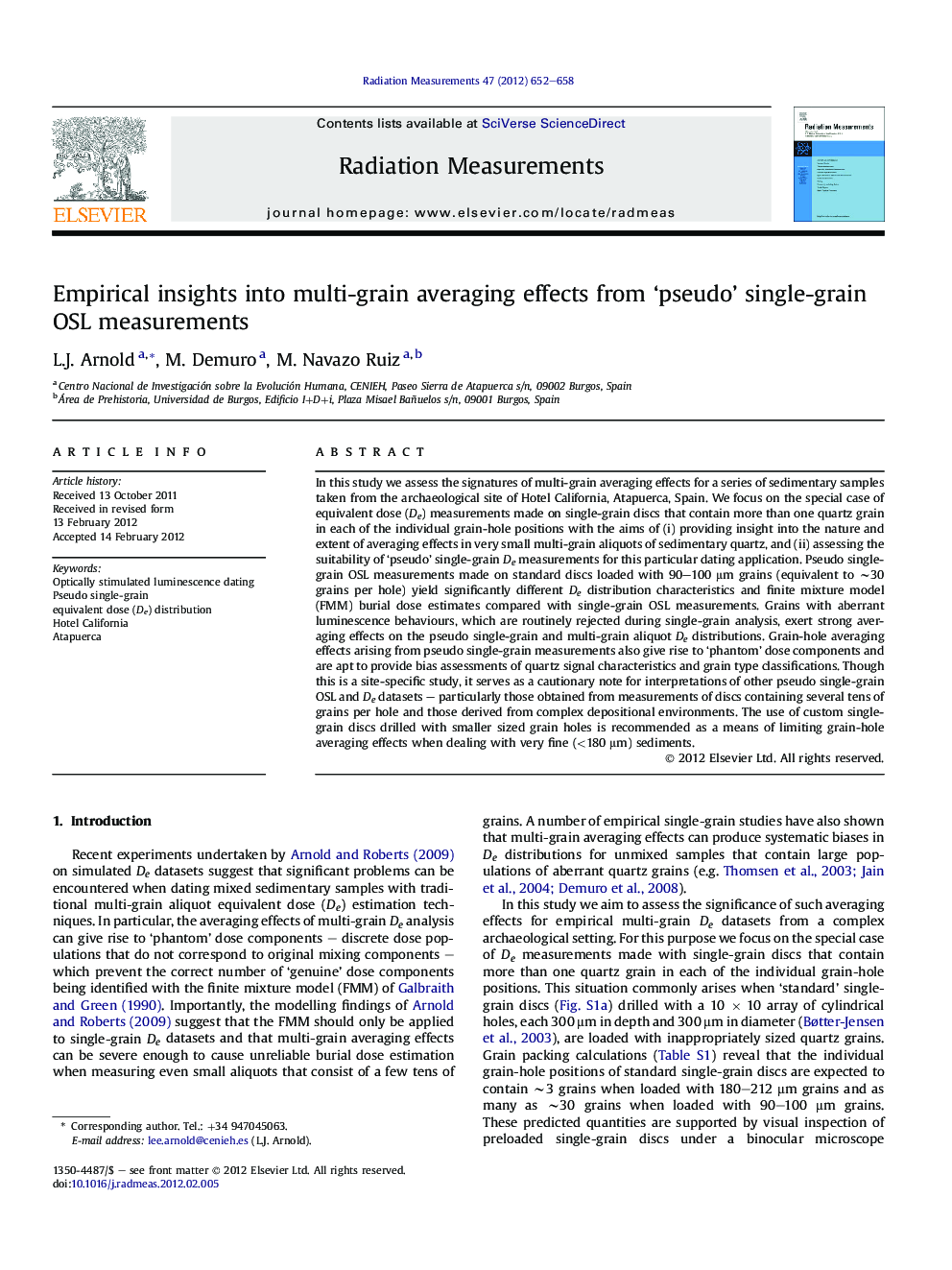| Article ID | Journal | Published Year | Pages | File Type |
|---|---|---|---|---|
| 1888459 | Radiation Measurements | 2012 | 7 Pages |
In this study we assess the signatures of multi-grain averaging effects for a series of sedimentary samples taken from the archaeological site of Hotel California, Atapuerca, Spain. We focus on the special case of equivalent dose (De) measurements made on single-grain discs that contain more than one quartz grain in each of the individual grain-hole positions with the aims of (i) providing insight into the nature and extent of averaging effects in very small multi-grain aliquots of sedimentary quartz, and (ii) assessing the suitability of ‘pseudo’ single-grain De measurements for this particular dating application. Pseudo single-grain OSL measurements made on standard discs loaded with 90–100 μm grains (equivalent to ∼30 grains per hole) yield significantly different De distribution characteristics and finite mixture model (FMM) burial dose estimates compared with single-grain OSL measurements. Grains with aberrant luminescence behaviours, which are routinely rejected during single-grain analysis, exert strong averaging effects on the pseudo single-grain and multi-grain aliquot De distributions. Grain-hole averaging effects arising from pseudo single-grain measurements also give rise to ‘phantom’ dose components and are apt to provide bias assessments of quartz signal characteristics and grain type classifications. Though this is a site-specific study, it serves as a cautionary note for interpretations of other pseudo single-grain OSL and De datasets – particularly those obtained from measurements of discs containing several tens of grains per hole and those derived from complex depositional environments. The use of custom single-grain discs drilled with smaller sized grain holes is recommended as a means of limiting grain-hole averaging effects when dealing with very fine (<180 μm) sediments.
► De measurements based on ∼30 grains/hole reveal significant averaging effects. ► Pseudo single-grain burial doses are ∼2–2.5 times those of single grains. ► Grain-hole averaging effects can give rise to ‘phantom’ dose components. ► Pseudo single-grain assessments of quartz signal characteristics are biased. ► Custom discs with small grain holes are recommended for dating <180 μm quartz.
